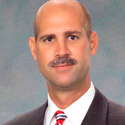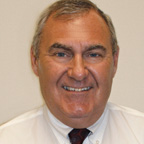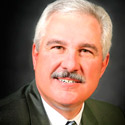Just one year ago, the world financial system stood on the brink of collapse. Throughout 2009, more than 100 U.S. banks failed, the largest number since 1992. Today, due in part to the unprecedented scope of government programs intended to stabilize the economy, the system is no longer at risk of systemic collapse, and positive signs are beginning to emerge. iBi asked seven area bankers for their perspectives on the Great Recession, TARP and other federal programs, new and proposed regulations, and the outlook for next year.
ROUNDTABLE PARTICIPANTS
 Andrew Black
Andrew Black
President/CEO, Princeville State Bank
Princeville State Bank is a community bank with offices in Princeville and Peoria. Its areas of focus include small business, consumer, mortgage and investment services. p-s-b.com
 Dan Daly
Dan Daly
Regional President, Busey Bank
Busey Bank is headquartered in Champaign, Ill., with $4.2 billion in assets and 34 banking centers serving downstate Illinois. Its focus includes loans and business services to small and medium-sized businesses and retail services. busey.com
 Fred Drake
Fred Drake
Chairman/CEO, Heartland Bank and Trust Co.
Heartland is a full-service, family-owned community bank based in Bloomington, Ill., with 41 branches in 25 communities across central and western Illinois and northeast Missouri. hbtbank.com
 Brent Eichelberger
Brent Eichelberger
President, Commerce Bank, Illinois
Commerce Bank is a super-community bank offering a range of financial products to consumers and businesses across a wide variety of industries. Commerce serves customers from more than 370 locations in the Midwest. commercebank.com
 Jay Glatz
Jay Glatz
Vice President-Marketing, State Bank of Speer
State Bank of Speer is a locally-owned and managed community bank with offices in Speer and Peoria. Its areas of focus include small and medium-sized businesses and individual accounts. speerbank.com
 Joseph Henderson
Joseph Henderson
President, Central Illinois Bank
Central Illinois Bank is a community bank with 13 central Illinois locations and a focus on small-business and consumer-related needs. In 2010, it will open a branch in the Sheridan Village Shopping Center. centralillinoisbank.com
 Doug Stewart
Doug Stewart
Regional President, National City Bank
National City is a full-service regional bank with its central Illinois headquarters in Peoria. It is now part of PNC Financial Services Group, the nation’s fifth largest bank by deposits, with more than 185 branches throughout the state. nationalcity.com
What has been the impact of the recession/credit crisis on your institution?
Drake: All banks have more problem loans as a result of the recession. Our bank has been able to manage its loan portfolio relatively well. We focus on credit right here at home, where we know what we’re doing. Our bank has been viewed as a source of strength in our area, and we have been adding many new customers and deposits in recent months.
Glatz: We have not changed our conservative lending philosophy and have gained business from some of the larger banks. We have seen some of our small business customers struggle, and they have taken steps to reduce their operating costs. We have seen an increase in the need for operating lines of credit for small businesses. As for consumers, the majority of our customers have always been frugal, and many have become more conservative in their spending. We have also seen an increase in saving, and most people are staying invested in certificates of deposit. There was definitely a slowdown in borrowing for capital projects and in applications for commercial real estate loans. There has been an increase in requests for commercial loans in the past two to three months.
Henderson: The challenge in this weak economy is to be even more responsive and more creative in serving our customers’ needs. The credit crisis has slowed our lending opportunities, but with consumers seeking safety for their money, our deposit business remains strong. The decline in real estate values of our small business owners and residential homeowners has limited their borrowing ability. Nationally, more than 96 percent of small business owners own their personal residence, and over 45 percent of all small business loans are collateralized by some type of real estate asset. Business owners often rely on the equity in their home to obtain and collateralize their borrowing in support of their business. We have adjusted a small number of our underwriting guidelines, but for the most part, we continue to support the credit requirements of our business customers that have been impacted by the credit crisis.
Black: Obviously the recession has impacted most of us, but Princeville State Bank has managed to grow in this uncertain market. We actually stated that we weren’t going to participate in the recession, and we keep an optimistic outlook on the economy. The recession has made it more difficult for small businesses to have access to credit. We have seen an increase in the number of potential borrowers stating that their current institution has “cut them off,” and they are looking to establish a relationship with a locally-owned, smaller institution because they felt that the smaller bank is more stable than their large counterparts.
How did excessive risk-taking and subsequent government bailouts impact smaller banks in central Illinois?
Glatz: Our bank has experienced a major increase in FDIC premiums because of the extent of the bailouts. We did not make risky loans, yet we are being required to increase the reserves of the FDIC because of the larger institutions which made these foolish loans. We have also experienced increased regulation, especially in lending, and the bank examiners are definitely more vigilant.
Black: Everyone has seen their FDIC assessments increase in reaction to those institutions that have been closed by the FDIC or state regulators. The TARP bailouts have kept these “too-big-to-fail” institutions alive at the expense of the taxpayer and the smaller institutions that have managed their balance sheets all along. I don’t see this correcting itself unless there is accountability for the larger corporations. The smaller institutions didn’t cause the mess we are in; the reckless lending practices and investment decisions made by the larger institutions were the responsible parties.
How have market conditions for small business loans evolved from the inception of the credit crisis?
Glatz: Our rates for business loans have been low and have stayed the same for almost a year. We have denied loans when we felt there was too much risk. We do not want to put the bank at risk or lend money to a person or company who will not be able to continue to make payments. We have seen a remarkable change in the lending practices of many other banks who were making 90 to 100 percent (loan-to-value) loans to borrowers who had a great deal of debt or low credit scores. These same banks are refusing to make high-risk loans and requiring higher credit scores. Some banks have stopped making commercial loans completely.
Black: Larger down payments, additional collateral and shorter amortizations are now being required, as the market remains unstable. Credit is available for those that qualify, but the bar has been raised at most institutions. I am unsure if we will ever go back to the way things were. I think for most of us, we’ll maintain a cautious outlook for many, many years, as it would be very easy to fall back into a recession.
What about consumer home lending?
Drake: Housing prices have fallen some everywhere in our area. Fortunately, we have been affected less, because we had much less growth and speculation. People in central Illinois build homes to live in, not to get rich quick. Housing prices will level off, but it will take years to recover to pre-recession levels. The consumer will remember this time in their lives and be slow to jump into debt again. We are very active in financing homes, and many of our customers have enjoyed the lower rates possible by refinancing in 2009.
Glatz: The underwriters of home loans are requiring much higher credit scores and looking at debt-to-income ratios more carefully. The appraisal process has also changed and homes (especially at the $300-500,000 level) are appraising at lower values. The good news is that interest rates have remained relatively low. Some government programs are requiring very low down payments, while others are requiring 20-percent down payments.
Black: Home sales are up, and I think this will continue. Obviously, prices have seen a decline; this correction was inevitable, as we saw too much of an increase too quickly. Homes will continue to appreciate in value, but this will be tempered. Qualifications here have been altered as well. Increased underwriting standards are in place, and most are still qualifying for these purchases or refinances but the days of 125-percent loan-to-value loans are gone. The borrower must have some skin in the game to show they are serious.
What are your feelings on the Troubled Asset Relief Program?
Henderson: The creation of TARP provided capital to many institutions affected by the financial crisis. We did not have the need and did not apply for funding, but the outcome provided the necessary backstop for other banks. We have seen the federal government increase its control and regulatory authority over the recipients of TARP money, and that will eventually trickle down to community institutions like Central Illinois Bank.
Daly: The TARP program did an excellent job of getting liquidity and capital into the banking markets. Without this program, credit would be much tighter and the recession much deeper. We should expect many more financial institutions continuing to pay their TARP dividends, and ultimately repaying the TARP with high dividend returns to the U.S. Treasury.
Drake: I believe TARP was necessary when it was unveiled in October 2008. No one likes to see the government bail out business. I believe the original intent was to have the government truly “invest” in the banking community, because the U.S. economy needs a strong banking system to survive. I think TARP was well designed as an “investment,” and it has been shown, as many banks have repaid the government, to be a good one. Like any investment, some will go bad, and the government will eventually see some losses. But on balance, the program did what was intended in shoring up our banking system and restoring confidence.
Our bank did not take TARP money from the government, because honestly, we did not need their investment. We considered it carefully, because taking the money was tempting and would have allowed us to grow more rapidly. But rapid growth has never been our goal, and we were concerned about the strings attached.
Eichelberger: Commerce Bank is the largest bank in the country by market capitalization not to take federal TARP funds. Our earnings, capital and liquidity were strong enough to grow our business and take advantage of new opportunities without federal assistance. The current banking and economic environment continue to create a high degree of uncertainty. Commerce continues to focus on positioning the bank to face the economic challenges ahead.
What are your thoughts on regulatory overhaul?
Drake: I am very concerned about government regulators overreacting to the recession. Without a doubt, there were excesses in some banking markets. And some banks acted irresponsibly with overly loose credit guidelines and deceptive mortgage lending. But frankly, the worst offenders were lenders outside the bank regulatory scope. The vast majority of bankers provide credit in a responsible manner.
Daly: Recently, I had the opportunity to travel to Washington and meet with House Financial Services Committee Chairman Barney Frank and his staff. Our discussion focused on HR 3126, which creates the Consumer Financial Protection Agency. The CFPA would be a new, independent federal agency having vast authority to regulate all consumer products and services offered by all financial institutions, as well as all non-bank lenders.
I am concerned about the impact of a new regulatory agency. While I agree that it is important to review and enhance consumer protections, there is no need to build a new agency or bureaucracy in Washington. The federal government already has mechanisms in place for centralizing enhanced consumer protection.
Currently, regulators are taking steps that are making it difficult for banks to operate, which in turn makes it more challenging for banks to make credit available in the markets. Regulatory steps include pressuring banks to maintain capital levels well above those required, forced write-downs on assets and discouragement of banks using sources of funds other than deposits to fund operations. It is critical at this point in the economic recovery that banks maintain reasonable levels of flexibility to operate and provide the loan capital needed by businesses and consumers to rebound from the financial crisis.
Henderson: The increased FDIC insurance coverage for our depositors is the most important federal initiative. It alleviates fear associated with the crisis, stabilizes the deposit side of our business and helps relieve consumer anxiety associated with 401(k) and retirement fund losses. This deposit guarantee provides the funding liquidity banks need to support their borrowers’ needs.
The deposit insurance fund, into which banks pay premiums, has declined significantly due to the numerous bank failures occurring during the last two years. The FDIC is obligated to maintain the fund at substantial levels. These increased needs require banks to pay increased premiums and special assessments going forward. There has been discussion that larger institutions may be required to pay higher premiums due to risk associated with their size. This should provide some financial relief for the smaller banks around the country.
The creation of a new Consumer Financial Protection Agency will have a significant impact on all banks. The agency will have the ability to create new regulations, although responsibility for enforcement has not been clarified. Bank regulators will be called upon to increase their monitoring of the safety of financial institutions. To date, the federal government has not provided any indication that it plans to alleviate these burdens in the future, so we can anticipate more controls affecting the industry. All this translates into higher borrowing costs for small-business owners and consumers, and greater regulatory burden on the banks.
How do you feel about consolidation in the industry?
Drake: I believe we will see more consolidation at all levels of banking. There are thousands of different banks in the U.S. It is very expensive to keep up with technology and regulations as a very small bank. As customers use more technology, the traffic at bank branches will decline. That is why most of our branches are designed to be relatively small and efficient. There will always be a niche for community banks however.
Should further consolidation of the largest banks be discouraged?
Glatz: Absolutely, the too-big-to-fail banks caused the financial meltdown and proved that bigger is not better.
Black: Yes, “too-big-to-fail” should never occur. Everyone needs to be held accountable for their own actions and shouldn’t assume that if they make the wrong decision, someone will be there to bail them out.
What industry sectors are hot in the Peoria area?
Eichelberger: With a regional medical draw, the healthcare sector has weathered the recession as well as any industry in the area.
Stewart: There are a number of so-called “hot” sectors in Peoria—just look at the skyline where the construction is taking place. We are seeing strong economic activity in healthcare, such as at OSF Saint Francis and Methodist Medical Center. In fact, the healthcare industry is now the largest employer in the area and will continue to grow. Growth is also obvious in higher education, such as Bradley University and Illinois Central College, where construction is underway on various projects. In addition, agriculture continues to perform well, despite the weather-related problems we have seen this year, and Caterpillar’s improved outlook for 2010 should bode well for local suppliers.
What about the outlook for 2010?
Black: I think we’ll continue to see the impact of the economy carry over well into 2010, but by the third quarter of 2010, we should start seeing some optimistic signs in the economy. Consumer spending will have to maintain itself, housing sales will have to stay strong and unemployment will have to subside.
Drake: I believe that U.S. economic growth will be slow to recover, and when it does, it will be at a slower pace than we’ve been used to. Our local communities are mostly low-growth, stable communities, so I think our area will be less affected. Across central Illinois, our major employers are strong. Caterpillar is a global leader in its industry. State Farm in Bloomington is a national leader in insurance. The University of Illinois provides a strong base underlying Champaign/Urbana. In Illinois, we have our issues, but we should be thankful for our strong foundation here in the heartland.
Stewart: This fall, PNC’s economic outlook for Illinois concluded that the Great Recession of 2008 to mid-2009 appeared to end in the summer quarter. Best of all, the nascent recovery in U.S. and global economies is lifting the outlook for small- and mid-sized business owners in Illinois. Local business owners are less pessimistic about their companies’ sales, profits and jobs: 43 percent expect sales to increase over the next six months. Likewise, 34 percent expect to see an increase in profits, and 15 percent expect to hire additional employees.
Henderson: The outlook is improving. CNN/Money listed Peoria as the fifth-best mid-sized U.S. city in which to launch a small business. Residential home sales have begun to rebound slightly, although new home construction is still weak. Low prices, low mortgage rates and first-time homebuyer incentives have spurred home-buying at the lower end of the market. Although the ongoing economic downturn has impacted us and many of our customers, I believe we are much better positioned to withstand further declines. We continue to be optimistic relative to the central Illinois market and the customers we serve.
Daly: Central Illinois has weathered the economic crisis very well. This area did not see the enormous real estate bubble issues which have adversely affected other areas of the country. The difficulties that we have faced are being managed successfully, and this bodes well for a steady recovery. In central Illinois, loan losses for most banks have been manageable and consistent with past recessions.
I look forward to a steady recovery in 2010. Many of us have not forgotten the challenges of the Rust Belt days of the 1980s, when local unemployment exceeded 18 percent and housing prices were significantly devalued. The challenges of the 1980s made us a stronger community, and this strength will help us to persevere and succeed.
I am expecting growth in the manufacturing, logistics and healthcare industries in central Illinois. I am impressed with the entrepreneurial outlook by the leadership and investors in the market. With this spirit of entrepreneurism and excellent business leadership, 2010 should be the start of a steady climb back to prosperity for all in central Illinois. iBi


